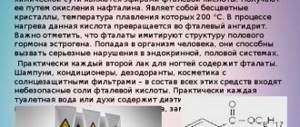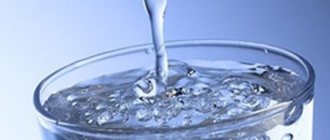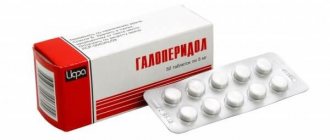Aflatoxins are one of the most insidious groups of toxic substances. Today you will learn what they are, how they can get into our body and what needs to be done to prevent poisoning.
Danger is near! Be extremely careful!
How long have you bought food at markets, for example, nuts, dried fruits or milk? Recently? Are you sure that they were stored in the correct conditions? You cannot be sure of this, which means you are not insured against aflatoxin poisoning.
Under improper storage conditions, fungus multiplies in products, especially those listed above. This can happen if there is a favorable atmosphere in the warehouse or home environment.
Not all fungi are harmless, for example, Aspergillusflavus produces the strongest poisons described above, which can poison you and me to death. Let's find out what aflatoxins are, where they are found and how to protect yourself from them.
Products containing aflatoxins
Distribution medium : all grain products, concentrated juices, dried fruits, baked goods, eggs, milk, spices, daily drinks (tea, coffee) and a number of other products. Danger comes from products that contain dyes and flavor enhancers (flavors). Due to their content, it is difficult to see the mold that has appeared. They grow vigorously in the warehouses of wholesale companies and stores when storage conditions are violated. Aflatoxin B1 enters our body when we eat food. Their main habitat is dairy products. The first thing this poison affects is the liver.
- Liver necrosis;
- Weakening of the immune system;
- Violation of biological metabolism;
- Reduced formation of bile salts;
- Violation of mineral metabolism;
- Impaired absorption of fats;
Scientists have established a lethal dose of 75 mg/kg. Death occurs within 3–5 days. It is very painful, as vital organs stop functioning.
Features of the poison
Aflatoxins are an insidious substance produced by microorganisms from a group of fungi.
Microscopic mold fungi are found in food, or more precisely in:
• nuts; • cereals; • spices; • dairy; • tea/coffee; • meat; • eggs; • dried fruits; • juices; • bread; • pasta.
For the fungus to reproduce and live, certain conditions are necessary - warm air and humidity, like in a greenhouse. Most often, the source is peanuts and other nuts, which are stored without refrigeration in all retail outlets, even in large supermarkets.
Thus, we can conclude that the poison described in the article should be classified as mycotoxins.
Currently, 4 main types of aflatoxins have been identified:
• IN 1; • AT 2; • G 1; •G 2.
In addition to them, metabolites are also known - M 1, M 2, B 2a, GM 1, P 1, etc. The most common is subspecies B 1, which is most often found in cereals, pasta and dry berries. M 1 is most often present exclusively in milk and various dairy products.
Symptoms of poisoning
With this type of poisoning, symptoms appear very quickly. Literally in half an hour.
- A sharp decrease in appetite;
- Feeling tired;
- The appearance of swelling;
- Signs of nausea or persistent vomiting;
- Acute pain in the head;
- Signs resembling jaundice;
- The appearance of red spots on the skin;
- Loss of coordination;
- Spasm;
- Paralysis;
- Sharp pain in the liver area;
- Intestinal dysfunction;
- Indifference and weakness.
If a large amount of aflatoxin enters the body, a deadly form of acute intoxication of the body begins to develop.
Medicine divides acute poisoning into several types:
- Bronchopulmonary aflatoxicosis.
- Septic type of disease.
- Bone appearance.
- Skin lesions.
- Ocular type of disease.
The most common type of disease is bronchopulmonary aflatoxicosis. This species is also isolated from people with HIV.
The disease progresses with characteristic features:
- Faster development of the disease. Due to immunodeficiency, the disease develops within a few hours;
- Septic blood infection with Aspergillus fungi occurs;
- Subsequently, complications arise in the lungs and other organs.
The development of all these complications usually leads to the death of the patient. With periodic consumption of contaminated food, a person begins to experience complications with bones and joints. In some cases, this leads to a disease called cirrhosis of the liver. There are also known cases of bone fractures. This occurs due to the development of osteoporosis.
During breastfeeding, aflatoxin is transmitted from mother to child through mother's milk. There is a high probability that the child may develop cirrhosis of the liver within 2-3 weeks.
People with hepatitis B or C disease are more likely to develop cancer. The possibility of its formation increases several times. Since the body is affected by the poison, the production of the necessary immune bodies is sharply reduced.
Acute aflatoxicosis
The most dangerous aflatoxicosis. Death can occur after two days. Its symptoms:
- Are common. Muscle pain is accompanied by fever, sweating, swelling and weakness.
- Digestive organs. It manifests itself as pain in the side on the right side or pain in the gastrointestinal tract, attacks of nausea, vomiting and diarrhea.
- Nervous system disorder. Dizziness or severe headache. Impaired coordination of movements. Convulsive syndrome and paralysis appear.
If acute aflatoxicosis occurs in children, the prognosis is not good. The disease develops rapidly: vomiting, convulsions and coma. It’s scary, but true: 80% of children with acute aflatoxicosis die. The affected liver and nervous system contribute to the immediate development of the disease. With mild or moderate poisoning, it lasts about two weeks. Much faster in case of acute poisoning. Aflatoxicosis is a disease that requires urgent professional medical intervention.
Molecular mechanism of action
Scheme of formation of DNA adduct AFB1.
Aflatoxin B1 itself does not have a carcinogenic effect, i.e. it is a procarcinogen
.
Its epoxide is a carcinogen. Once in the hepatocyte, aflatoxin B1 is hydroxylated by the microsomal oxidation system catalyzed by cytochrome P450 to epoxide (8,9-epoxy-AFB1). Epoxide exhibits extremely high reactivity due to the presence of unpaired electrons on the oxygen atom and the tension of the epoxide ring, which is easily destroyed and its activity increases (formation of electrophilic groups). The epoxide immediately begins to alkylate DNA, forming strong covalently bound DNA adducts, especially with guanine (8,9-epoxy-APB1-N7-guanine). The alkylation process occurs via the mechanism of monomolecular nucleophilic substitution SN2
.
Alkylation of DNA with AFB1 epoxide leads to damage to the p53 tumor suppressor gene, including loss of protein expression[11]. Thereby depriving the hepatocyte of apoptosis. Further continuation of the process leads to cell transformation, through the activation of certain oncogenes, for example, K-ras, causing hepatocellular carcinoma[12].
All of the above violations lead to so-called metabolic chaos and cell death.
First aid
First of all, do not panic and remain calm. Act decisively and quickly.
- Call emergency ambulance;
- Try to rinse the stomach: induce vomiting, drink 2-3 glasses of water with the addition of 2 teaspoons of salt per glass. Repeat the procedure 3-4 times.
- Give activated black charcoal to drink.
- Provide the victim with a state of rest.
Further treatment will be carried out by medical professionals.
Notes
- Galvano F., Ritieni A., Piva G., Pietri A. Mycotoxins in the human food chain. In: Diaz DE, editor. The Mycotoxin Blue Book. Nottingham University Press; Nottingham, UK: 2005. pp. 187–224.
- Ilic Z., Crawford D., Vakharia D., Egner PA, Sell S.
Glutathione-S-transferase A3 knockout mice are sensitive to acute cytotoxic and genotoxic effects of aflatoxin B1. (English) // Toxicology and applied pharmacology. - 2010. - Vol. 242, no. 3. - P. 241-246. — DOI:10.1016/j.taap.2009.10.008. - PMID 19850059. [correct] - Chen T., Heflich RH, Moore MM, Mei N.
Differential mutagenicity of aflatoxin B1 in the liver of neonatal and adult mice. (English) // Environmental and molecular mutagenesis. - 2010. - Vol. 51, no. 2. - P. 156-163. — DOI:10.1002/em.20518. - PMID 19642212. [correct] - Geissler F., Faustman EM
Developmental toxicity of aflatoxin B1 in the rodent embryo in vitro: contribution of exogenous biotransformation systems to toxicity. (English) // Teratology. - 1988. - Vol. 37, no. 2. - P. 101-111. — DOI:10.1002/tera.1420370203. - PMID 3127910. [fix] - Meissonnier GM, Pinton P., Laffitte J., Cossalter AM, Gong YY, Wild CP, Bertin G., Galtier P., Oswald IP
Immunotoxicity of aflatoxin B1: impairment of the cell-mediated response to vaccine antigen and modulation of cytokine expression . (English) // Toxicology and applied pharmacology. - 2008. - Vol. 231, no. 2. - P. 142-149. — DOI:10.1016/j.taap.2008.04.004. - PMID 18501398. [correct] - Gracheva I.M.
Theoretical foundations of biotechnology. Biochemical basis of the synthesis of biologically active substances. - M.: Elevar, 2003. - P. 379. - 554 p. - Boonen J., Malysheva SV, Taevernier L., Diana Di Mavungu J., De Saeger S., De Spiegeleer B.
Human skin penetration of selected model mycotoxins. (English) // Toxicology. - 2012. - Vol. 301, no. 1-3. - P. 21-32. — DOI:10.1016/j.tox.2012.06.012. - PMID 22749975. [correct] - Espada Y., Domingo M., Gomez J., Calvo MA
Pathological lesions following an experimental intoxication with aflatoxin B1 in broiler chickens. (English) // Research in veterinary science. - 1992. - Vol. 53, no. 3. - P. 275-279. - PMID 1465501. [fix] - Larsson P., Busk L., Tjälve H.
Hepatic and extrahepatic bioactivation and GSH conjugation of aflatoxin B1 in sheep. (English) // Carcinogenesis. - 1994. - Vol. 15, no. 5. - P. 947-955. - PMID 8200100. [fix] - Patterson DSP Aflatoxin and related compounds: Introduction. In: Wyllie TD, Morehouse LG, editors. Mycotoxic Fungi, Mycotoxins, Mycotoxicoses, an Encyclopaedic Handbook. 1st. Vol. 1. Marcel Dekker Inc.; New York, NY, USA: 1977. pp. 131–135.
- Wogan GN, Hecht SS, Felton JS, Conney AH, Loeb LA
Environmental and chemical carcinogenesis. (English) // Seminars in cancer biology. - 2004. - Vol. 14, no. 6. - P. 473-486. — DOI:10.1016/j.semcancer.2004.06.010. - PMID 15489140. [correct] - Ricordy R., Gensabella G., Cacci E., Augusti-Tocco G.
Impairment of cell cycle progression by aflatoxin B1 in human cell lines. (English) // Mutagenesis. - 2002. - Vol. 17, no. 3. - P. 241-249. - PMID 11971996. [correct] - Chen T., Heflich RH, Moore MM, Mei N.
Differential mutagenicity of aflatoxin B1 in the liver of neonatal and adult mice. (English) // Environmental and molecular mutagenesis. - 2010. - Vol. 51, no. 2. - P. 156-163. — DOI:10.1002/em.20518. - PMID 19642212. [correct] - Geissler F., Faustman EM
Developmental toxicity of aflatoxin B1 in the rodent embryo in vitro: contribution of exogenous biotransformation systems to toxicity. (English) // Teratology. - 1988. - Vol. 37, no. 2. - P. 101-111. — DOI:10.1002/tera.1420370203. - PMID 3127910. [fix] - Meissonnier GM, Pinton P., Laffitte J., Cossalter AM, Gong YY, Wild CP, Bertin G., Galtier P., Oswald IP
Immunotoxicity of aflatoxin B1: impairment of the cell-mediated response to vaccine antigen and modulation of cytokine expression . (English) // Toxicology and applied pharmacology. - 2008. - Vol. 231, no. 2. - P. 142-149. — DOI:10.1016/j.taap.2008.04.004. - PMID 18501398. [correct] - Kaletina N.I.
Toxicological chemistry. Metabolism and analysis of toxicants. - M.: GEOTAR-Media, 2008. - P. 984. - 1016 p. — 2000 copies. — ISBN 978-5-9704-0613-7.
Diagnostics
All diagnostics of aflatoxin poisoning are carried out only in laboratory conditions. And this:
- Mycological analysis of sputum and smear of the mucous membrane. The disadvantage of this method is the lengthy study of the analysis;
- Radiography. Makes it possible to detect the presence of infiltrates of a characteristic shape;
- Computed tomography of the lungs. This method also allows you to identify diseases such as tuberculosis or lung cancer;
- Serological laboratory blood test;
- General analysis of urine and blood, blood test for biochemistry.
It is important to tell the treating staff the source of the suspected poisoning.
Forms of the disease
There are several clinical forms of the disease:
- Bronchopulmonary aflatoxicosis.
- Septic form of the disease.
- Bone form.
- Skin lesions.
- Ocular form of the disease.
- Other, rarer forms of toxicosis.
The most common forms are bronchopulmonary aflatoxicosis and the septic form. Aflatoxicosis is also identified in HIV-infected patients, since in this category the disease occurs with some features:
- The disease progresses very rapidly - signs of intoxication increase to a maximum level within a few hours.
- Septic blood damage by fungi of the genus Aspergillus develops.
- Then complications from the lungs and other organs appear.
The prognosis in this case is extremely unfavorable.
Treatment
If medical personnel diagnose “Acute aflatoxicosis,” then urgent hospitalization and treatment under close medical supervision are necessary.
Main methods of treatment:
- Elimination of sources of toxic substances. Gastric lavage is performed using a tube. If a person is in a conscious state, you can do it in a simple way (drink a large volume of water and induce vomiting). It is also necessary to do cleansing enemas. This stops the absorption of toxic substances into the circulatory system.
- Prescription of medical drugs that have the property of removing toxins and cleansing the body (Activated Carbon, Filtrumsti, Polyphepan, Lactofiltrum, Smecta, Enterosgel). The course of treatment is at least five days.
- Slag removal therapy. Intravenous drip administration of various cleansing solutions and the prescription of diuretics (diuretics that help inhibit the reabsorption of water and salts in the kidney tubules, as well as increasing their excretion from the body in the urine). Thus, the amount of fluid in tissues and serous cavities decreases. Required to speed up the process of cleansing toxic substances through the kidneys. It is important to ensure that the withdrawn liquid matches the injected solutions. This way you can determine the performance of your kidneys.
- The use of antifungal drugs in the treatment, in this situation, directly to combat the Aspergillus fungus. These are drugs such as Itraconazole, Amphotericin B, Caspofungin, Voriconazole. Antifungal therapy is the main component in the treatment of aflatoxicosis, as it directly eliminates the source of the disease. To avoid the formation of resistant forms, it is necessary to carry out a full course of treatment.
- Taking medications that help stimulate the immune process: Tsitovir, Timalin. The higher the patient’s immunity, the more effective the treatment.
- Purpose of taking vitamin complexes. Strengthens the body, helps rapid recovery and prevents complications.
Treatment is carried out under the supervision of medical professionals, so that in case of complications, additional treatment can be prescribed in a timely manner.
If treatment is started at an early stage of the disease, complications can be avoided.
Consequences for the body
Ingestion of aflatoxin bacteria into the body leads to serious consequences. As already written, it causes damage to many organs. Poisoning with large amounts of aflatoxin, and after treatment, can lead to cirrhosis of the liver or cancer. Therefore, people who have suffered this type of poisoning experience a number of disturbances in the functioning of the body:
- Poor absorption of vitamin D;
- Weight loss;
- Children and adolescents have problems with growth development;
- Disorders in the protective functioning of the immune system;
- Various kidney diseases;
- Interruptions in the functioning of the cardiovascular system.
Of course, it is not at all necessary that these problems will arise in everyone who has suffered aflatoxin poisoning. But the likelihood of this is very high. And in this situation, the saying “Healthy food is the key to health” is not empty. If you look at the example of aflatoxin, you can understand that we are talking about the right or wrong food.
As we have already seen, the source of danger can be the most harmless and simple products, if they are handled and stored unfairly.
Preventive recommendations
Try to buy products only in supermarkets and trusted places, monitor their quality - check expiration dates, integrity of packaging, etc. Do not take the product if its packaging is damaged - torn, wrinkled, swollen.
Keep food in the refrigerator, even dry fruits and the like. Do not store open for longer than recommended (the manufacturer indicates the permissible storage time on the packaging). Handle baby food and sweets with particular care and caution. Buy an ozonator - a simple and safe device for disinfecting food and more... You can read more about the device here.
That's all, dear friends. So we found out what aflatoxins are. Be sure to follow the preventive advice and then you will definitely not encounter them. Ask any remaining questions in the comments, share your experience, subscribe to updates and send a link to the article to your friends on social networks. I wish you good health and all the best!











